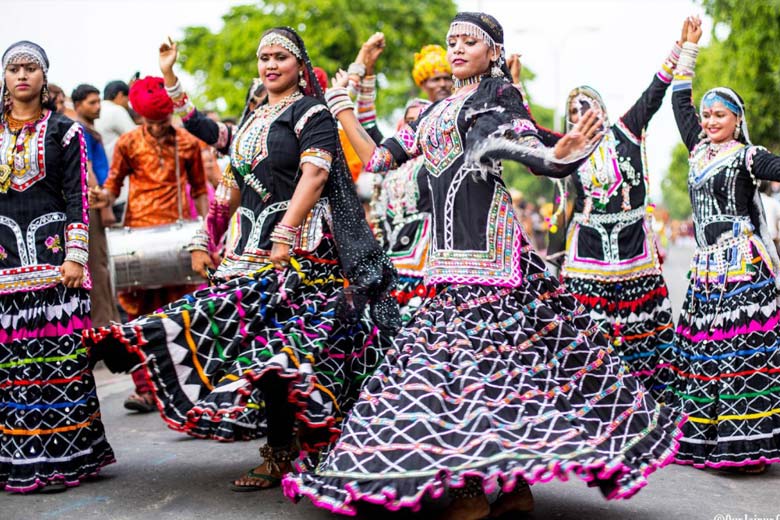- Kalbeliya Dance is a traditional Indian dance form from the state of Rajasthan.
- Members of the Kalbeliya, a nomadic tribe of snake charmers in Rajasthan, perform this vibrant, energetic dance.
- It is a sensual dance in which the dancers perform intricate footwork and sway their arms and bodies.
- UNESCO inscribed Rajasthan’s Kalbelia folk songs and dances on its Intangible Cultural Heritage List in 2010.

Specifics about performance
- The dancers are women in flowing black skirts who twirl and dance in the manner of a serpent.
- They wear an angrakhi as an upper body cloth and an odhani as a headcloth; a lehenga as a lower body cloth.
- All of these garments are embroidered and have a red and black colour scheme.
- The male participants create the rhythm for the dancers by playing musical instruments such as the ‘pungi,’ dufli, been, khanjari – a percussion instrument, morchang, khuralio, and dholak.
- The dancers have traditional designs tattooed on their bodies and wear jewellery and garments richly embroidered with small mirrors and silver threads.
- As the performance progresses, the rhythm and dance become faster and faster.
The Kalbeliya Dance’s Characteristics
- Quick footwork: The Kalbeliya dance’s fast, intricate footwork is the highlight of this folk dance. The dancers move their feet quickly and sharply, creating intricate patterns on the floor.
- Swirling skirts: The female dancers’ colourful skirts swirl gracefully as they move, adding to the beauty of the dance.
- Hand and arm movements: The dancers’ hands and arms are used to create graceful, fluid movements that are essential to the dance.
- Singing: Kalbeliya dancers frequently sing along to the music as they perform, adding to the atmosphere of the show.
- Traditional Kalbeliya music is accompanied by drums and cymbals, which contribute to the lively, energising atmosphere.
Source: https://www.rajasthandirect.com/culture/dance/kalbelia
